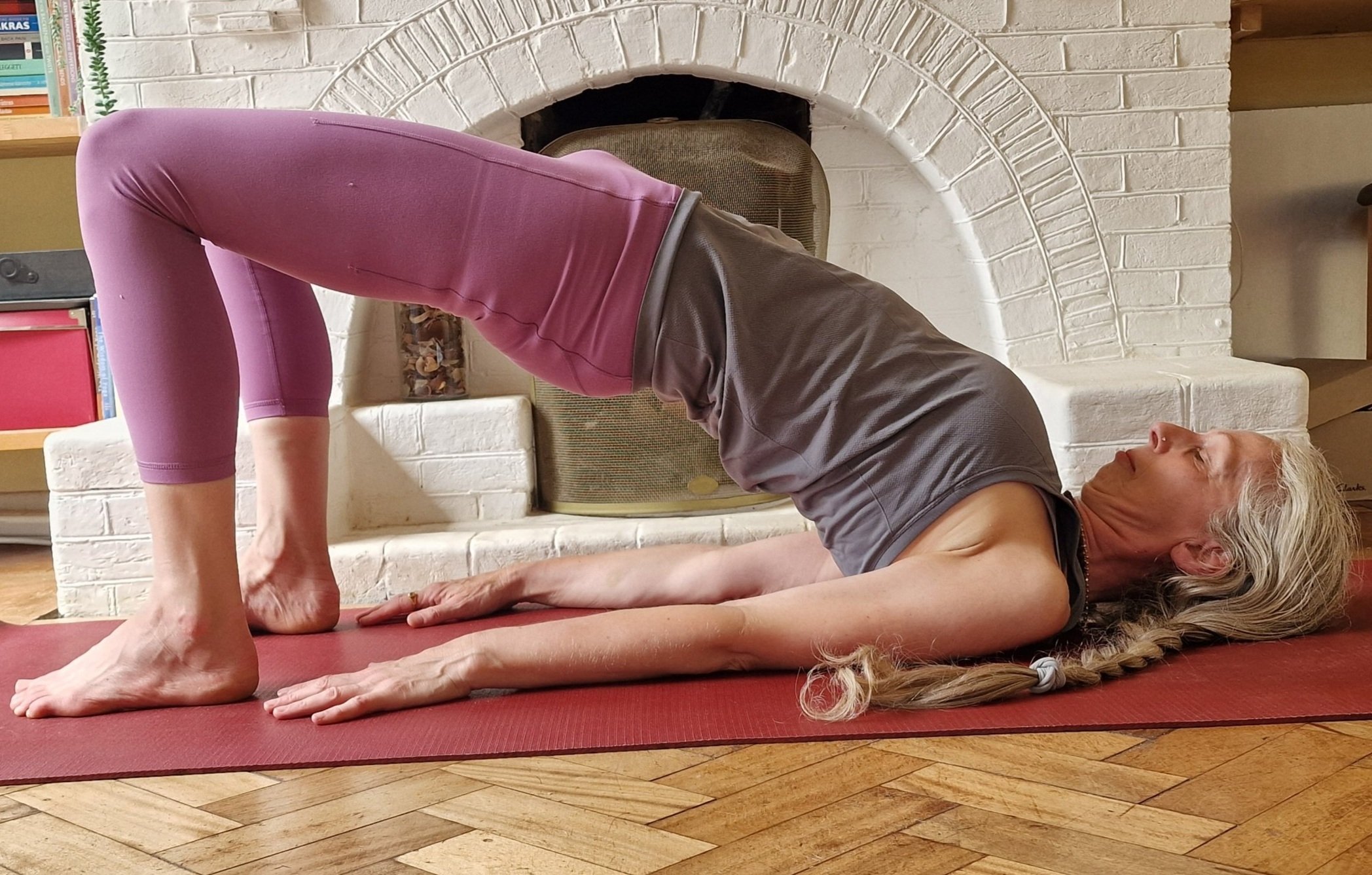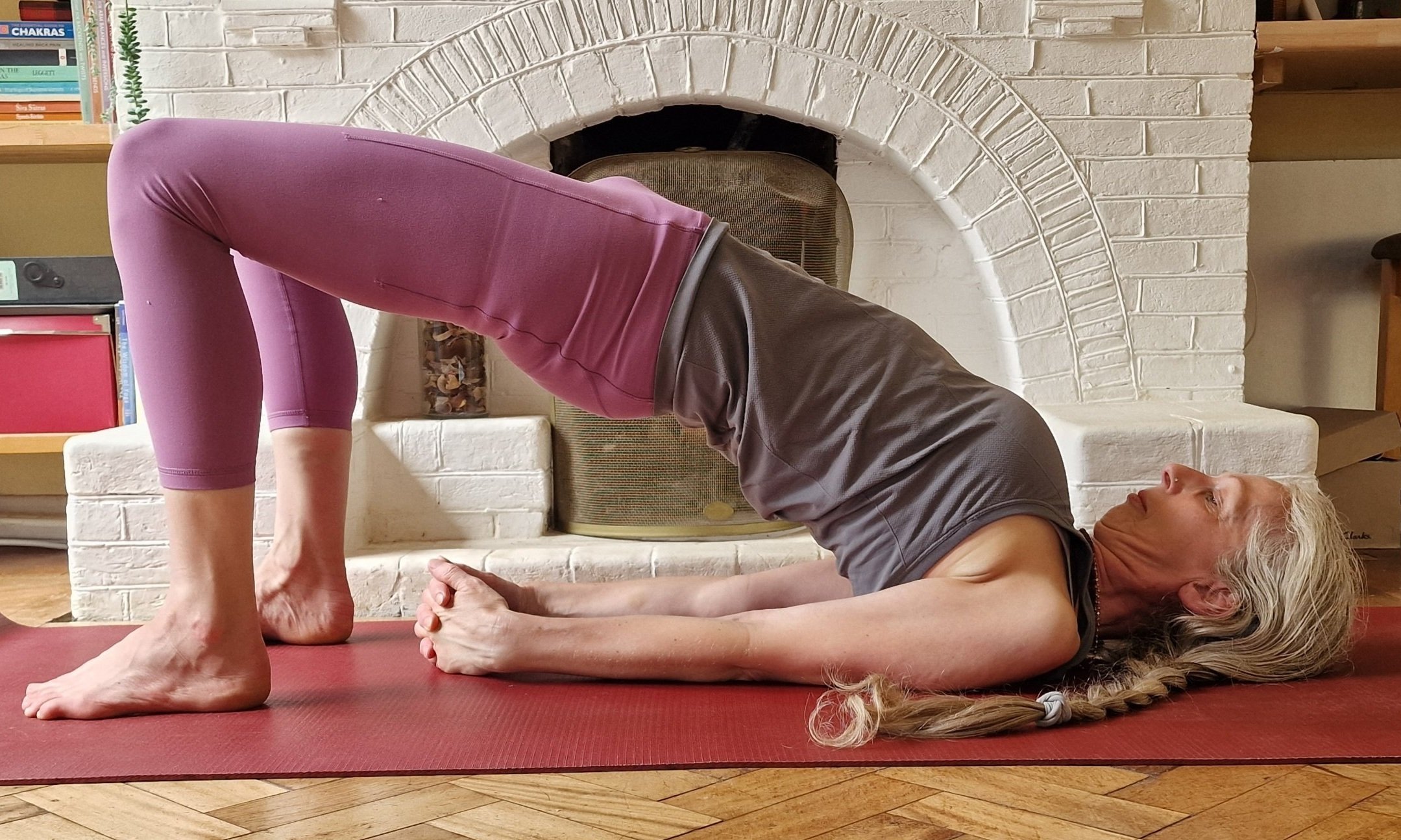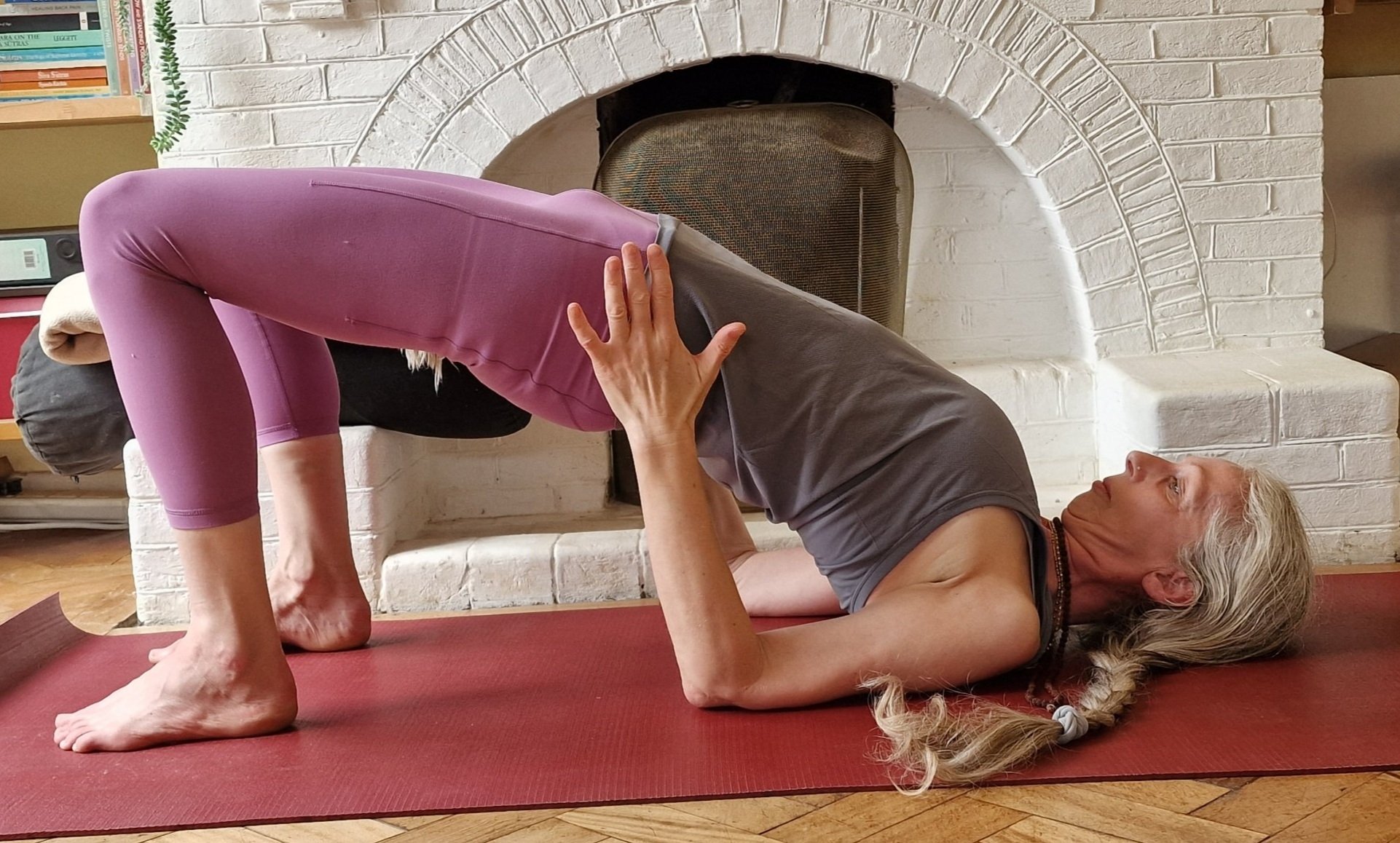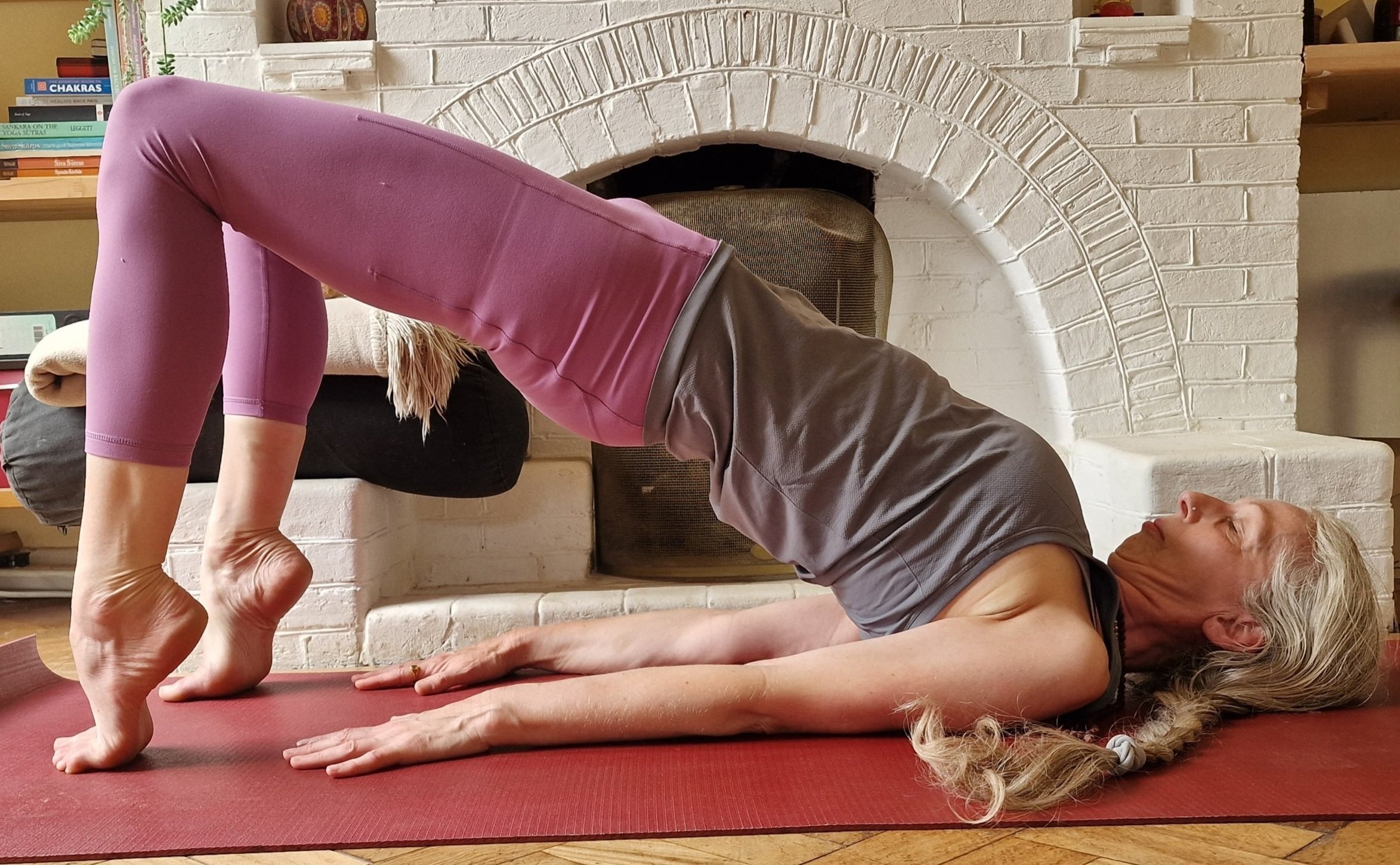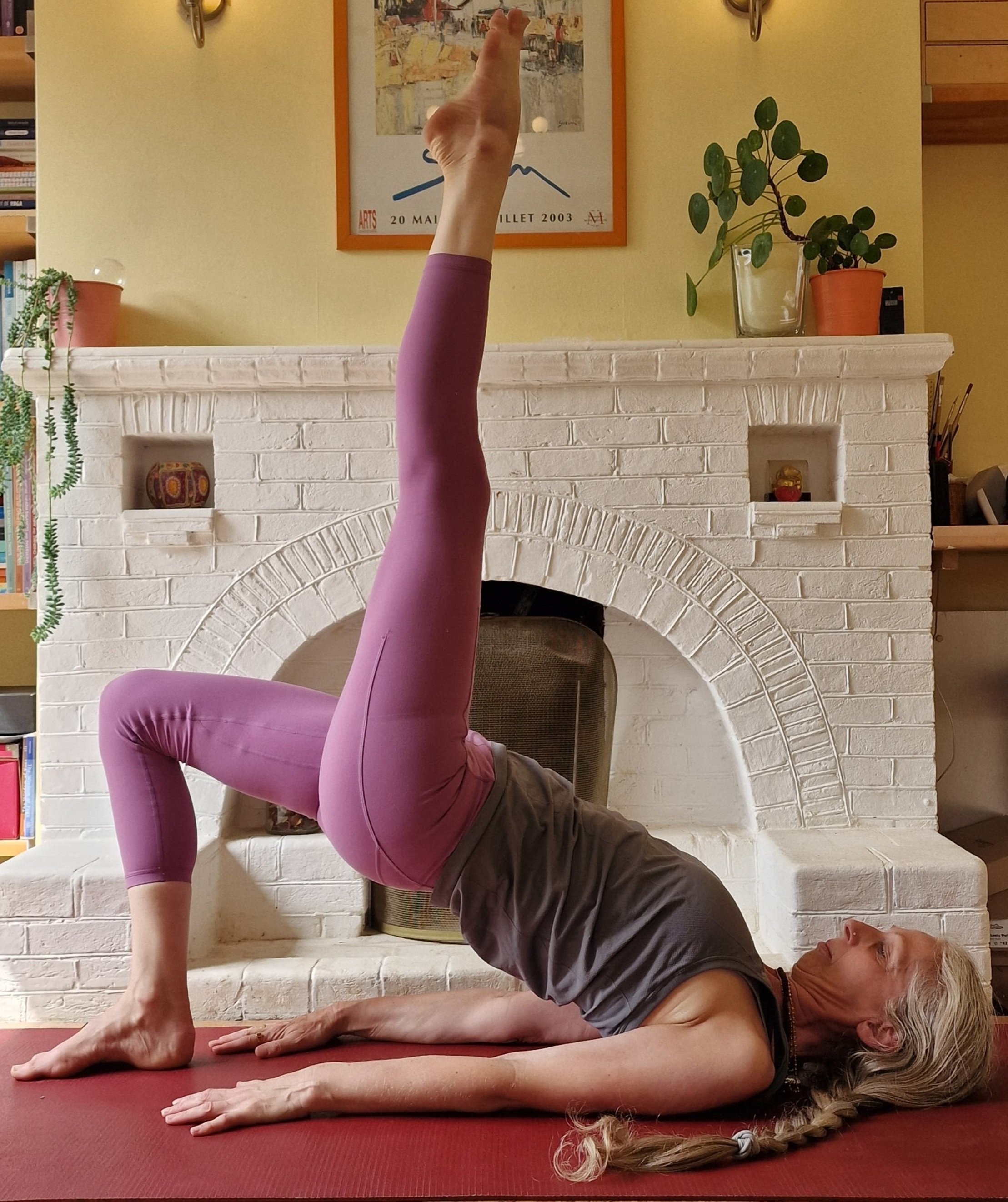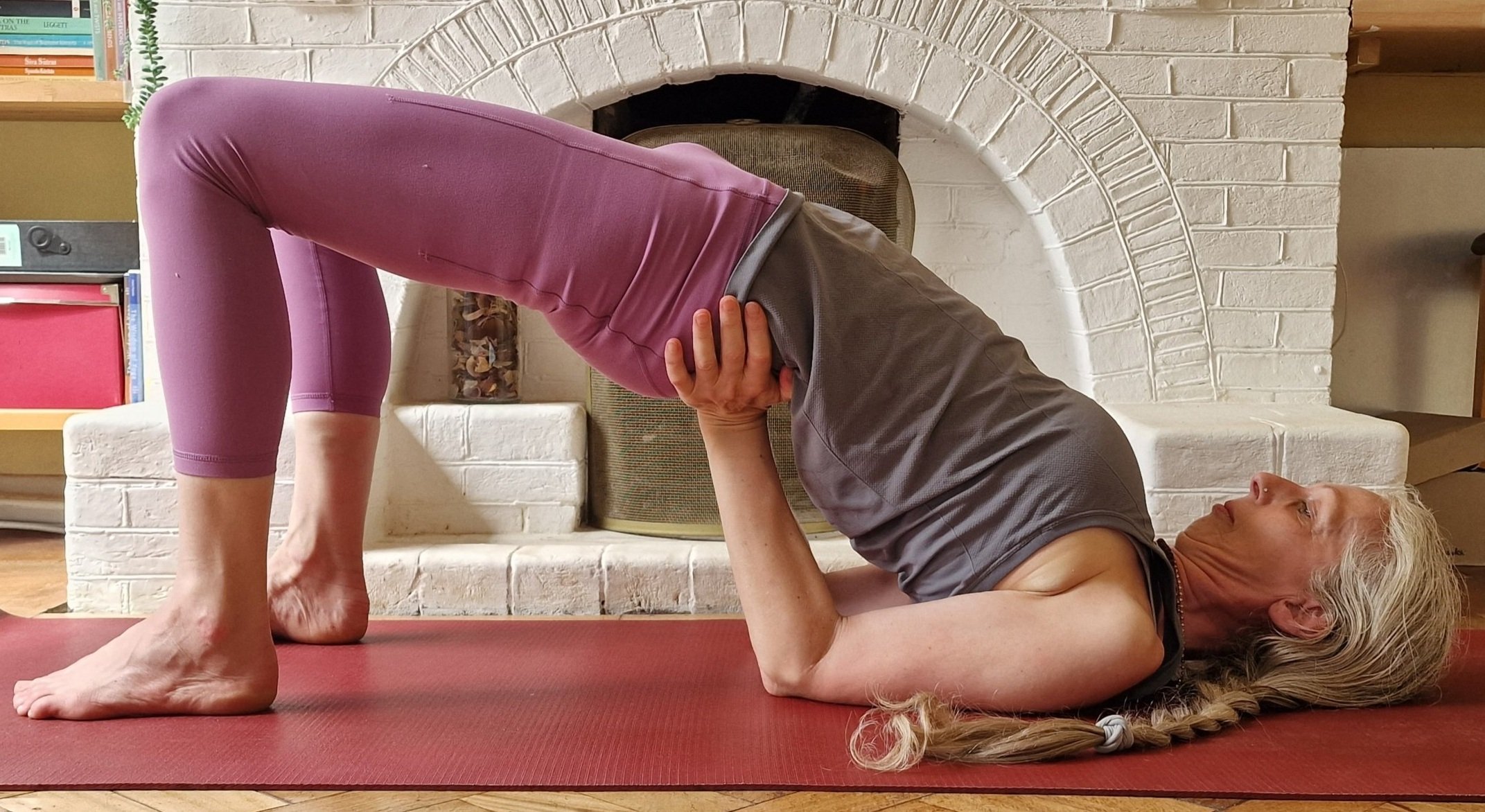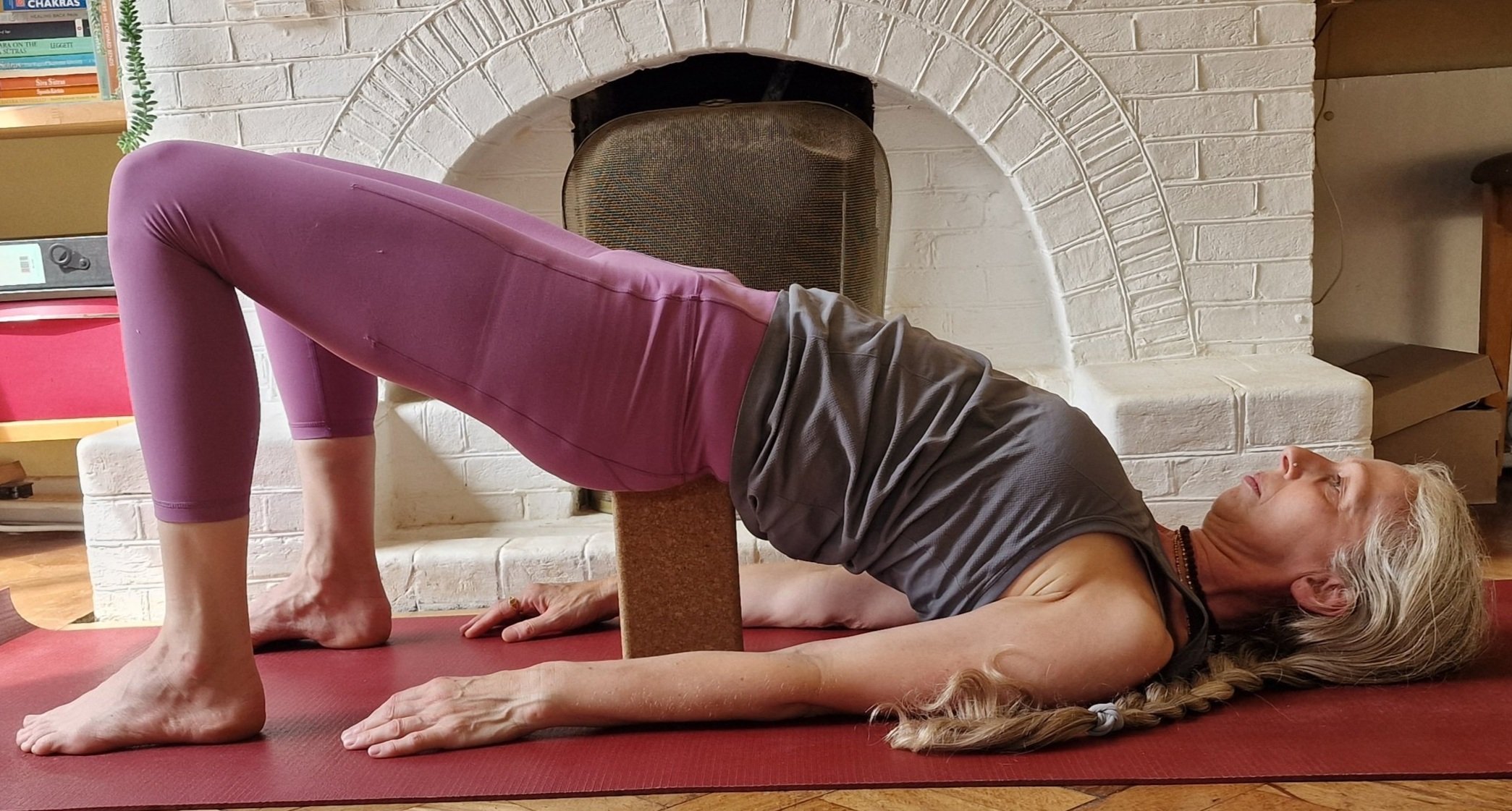How Bridge Pose Strengthens and Opens Your Shoulders
Bridge pose comes with many names: Setu Bandha Sarvangasana, Kandharasana, Dwi Pada Pitham and Setu Bhandasana.
Setu Bandha Sarvangasana
Setu = bridge
Bandha = lock
Sarva = all
Anga = limb
Kandharasana
Kandha – shoulder
Asana – pose
Dwi Pada Pitham
Dwi – two
Pada – feet
Pitham - stool, seat, chair, bench
From my earlier stages of practising Yoga, I clearly remember that my bridge pose, called Kandharasana, felt like these wobbling jungle suspension bridges where the wood already starts rotting.
One day I noticed that the wobble had stopped just like that. So, I told my teacher, and she said, yes, you are getting stronger.
Apart from Yoga, sattvic Food also helps to calm the Mind. Get your FREE Sattvic Shopping List.
Subscribe to our weekly Sunday Read newsletter & this Seasonal Living with Ayurveda & Yoga Blog.
Why practise Bridge Pose?
Bridge Pose strengthens the Body
This is one reason why I still practise and teach this pose regularly. It strengthens the entire body, legs, back, arms and shoulders.
It’s a beautiful pose balancing slouching due to our prolonged sitting by opening the front body. This means that space for breathing and digesting is created. In addition, the hip flexors muscles at the front of the hips are lengthened to counteract sitting.
Kandharasana strengthens and releases the Shoulders
The second reason is that the shoulders, Kandha, as mentioned above, kandha translates as shoulders.
The upper back muscles, thoracic spine, and rip cage area are engaging. This naturally helps the shoulders to relax. When these muscles are strong, they support your posture and make the torso steady. This encourages the shoulders to relax, as they don’t have a supporting function when we are standing or sitting; their natural state is one of balance and ease.
The shoulder and neck muscles are, however, the ones that hold our day-to-day stress and resulting tensions.
Let’s stay with the upper back for a moment.
Bridge pose is also beneficial to balance excess rounding of the upper back, which is called kyphosis. Just as the tight shoulders, excess rounding is another side effect of prolonged sitting, resulting in the weakening of the upper back muscles. Practising bridge poses regularly improves our posture. This is absolutely true. Since my early teenage years, I am suffering from scoliosis, leading to kyphosis of the upper back. My mother used to compare my posture with the shape of a question mark. When I visited her after a few months of practising Yoga, she remarked that my posture is so much better. Which is still is, and in order to keep it this way, I need to keep practising those poses.
To summarise the benefits of bridge pose:
Strengthens the spine and muscles of the back.
Improves posture.
Expands the chest for more effective breathing, which is also beneficial for disorders such as asthma.
Stimulates abdominal organs and improves digestion.
More Benefits to practise Dwi Pada Pitham
There are a few benefits that I haven’t mentioned yet, such as:
The opening of the front body also helps improve circulation.
Regular practice relieves PMS, menstrual pain and menopausal symptoms.
Relieves insomnia, as it calms the nervous system.
Increases energy.
During practice, the tops of the shoulders bear the weight of the torso. The neck muscles of the back of the neck are lengthened. Both act as a short massage, supporting the release of the tensions held.
Regular practice of Bridge pose makes a real difference to the health of your shoulders.
What to look out for, you ask? Isn’t it dangerous for the neck?
The neck is indeed one of our body's vulnerable areas, and we certainly must ensure that it feels good in this pose.
The good thing is, in Bridge Pose, we have control over how much pressure to exert on our neck by keeping the hips low and lifting our chest bone less.
In case of any neck issues, the pose can be held with a very low pelvis, supported with a brick, or the shoulders can be elevated with a blanket to relax the neck.
When practising bridge poses, you need to feel good without pain, issues, or worries.
❗It is always best to consult an experienced Yoga teacher when learning any of the Yoga postures 😊
So, how to practise Bridge Pose?
For that lie on your back.
Bend your knees and bring your feet close to your body; keep them hip-width apart.
Have your arms alongside your torso.
Walk your hands closer to your feet and roll each shoulder down and under to come closer to your feet and lengthen your neck.
Press the floor away firmly with your feet and your arms.
Inhaling lift your pelvis and roll your spine off the floor.
Exhaling be in the pose.
Inhaling roll your shoulder again down and under so the weight of the torso is held towards the tops of your shoulders.
Continue breathing deeply to your navel. Inhale, focus on the space at the front of your body, exhaling focus on the strength of the back of your body.
Keep feet and arms active.
Ensure that your knees stay above your ankles by activating the inner thighs.
Gently bring your chest bone towards your chin; mind your neck!
Stay for 3 to 5 slow breaths.
Exhaling, roll your spine back onto the floor.
During the holding phase of this pose, focus on the flow of your breath.
Another focus could be how this pose bridges your existence in both worlds, the physical and the spiritual, the mundane and the divine.
Modifications and Variations of Setu Bandha Sarvangasana
Practising poses dynamically is often easier accessible than holding them statically for any number of times.
So, this is a version that I love, and I know my students love it too. As you lift your pelvis, raise your arms and bring them all the way overhead. With the outbreath, return to the starting position with your back and arms.
This is a great starting point and a lovely evening spine massage after a long day of sitting with focused work on the screen or standing for a prolonged time.
Short practice of dynamic bridge pose.
Use different Hand Positions.
Interlace your fingers underneath your back and keep your arms pressing the floor away.
Bent the elbow to 90 degrees and press the floor away with your upper arms; this is even more strengthening for your space around and between the shoulder blades.
Here is a fun version; come onto your tiptoes.
Even more, strength is required by lifting one leg at a time and keeping it hovering above the floor.
Or stretch one leg up towards the ceiling.
Or stretch one leg up towards the ceiling.
Include some hip opening work by crossing the ankle to the outside of the opposite knee, like threading the needle.
Lengthen the outer hip by crossing one leg over the other as if you are sitting on a chair.
Or help to prepare your body for shoulder stand by turning the palm up and the back of your hands on the floor.
Bend elbows and place the palms underneath the pelvis, with the fingers on the outside and the wrist on the inside.
Once confident in shoulder stand, try exiting shoulder stand into bridge pose. This should be attempted only when you are at ease with both poses independently.
the transition from shoulder stand into bridge pose
How about a restorative bridge practice using a brick, a couple of blankets, or a bolster?
There is really no end to it, right?
Need a little Challenge?
Bridge pose is an excellent starting point for the more trickly big bridge or wheel pose, Chakrasana. Start off with integrating this arm position into your regular bridge pose practice until you press the floor away and your head and chest lift a little off the floor.
Then work your way slowly up. This is obviously .a different pose, but leading on from bridge pose. Make sure that you integrate all parts of your back, lower, mid and upper in the pose to feel an even arch, this is super important. My wheel pose is still a work in progress, but I have already come a long way
Final Thoughts
Bridge pose, whether known as Setu Bandha Sarvangasana, Kandharasana, or Dwi Pada Pitham, is a versatile yoga asana with numerous benefits for both the body and the mind.
It's a powerhouse of a pose that strengthens and opens up the body, especially targeting the spine, back muscles, and shoulders.
Regular practice of this pose can help combat the drawbacks of prolonged sitting, improve posture, enhance breathing, and relieve various health conditions.
It's a connector, bridging the physical and spiritual realms, the everyday and the extraordinary. However, like all yoga postures, it's essential to approach it with awareness and guidance to ensure safety and maximize its benefits. Embrace the bridge pose in your yoga routine and experience the balance and strength it can bring to your life.
Tell me all about your experiences with Bridge Pose. You can leave a message on Instagram, Facebook or even good old email.
I love hearing from you!
Katja x
P.S. Be sure you download the Sattvic Shopping List to keep your mind calm during your Yoga practice and beyond!
